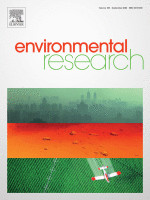Understanding COVID-19 diffusion requires an interdisciplinary, multi-dimensional approach

12.06.2020
COVID-19, Environment-to-human pollution, Economy, Interdisciplinarity
Environmental Research, Volume 188, September 2020, 109814
After COVID-19 initial diffusion in Europe in March 2020, research has suggested a direct correlation between environmental pollution and contagion dynamics (i.e., environment-to-human pollution), thereby indicating that mechanisms other than human-to-human transmission can explain COVID-19 diffusion. However, these studies did not consider that complex outcomes, such as a pandemic’s diffusion patterns, are typically caused by a multiplicity of environmental, economic and social factors. While disciplinary specialties increase scholars’ attitudes of concentrating on specific factors, neglecting this multiplicity during a pandemic crisis can lead to misleading conclusions. This communication aims to focus on certain limitations of current research about environmental-to-human COVID-19 transmission and shows the benefit of an interdisciplinary, multi-dimensional approach to understand the geographical diversity of contagion diffusion patterns.
After COVID-19 initial diffusion in Europe in March 2020, research has suggested a direct correlation between environmental pollution and contagion dynamics (i.e., environment-to-human pollution), thereby indicating that mechanisms other than human-to-human transmission can explain COVID-19 diffusion. However, these studies did not consider that complex outcomes, such as a pandemic’s diffusion patterns, are typically caused by a multiplicity of environmental, economic and social factors. While disciplinary specialties increase scholars’ attitudes of concentrating on specific factors, neglecting this multiplicity during a pandemic crisis can lead to misleading conclusions. This communication aims to focus on certain limitations of current research about environmental-to-human COVID-19 transmission and shows the benefit of an interdisciplinary, multi-dimensional approach to understand the geographical diversity of contagion diffusion patterns.
